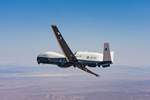Project Greenlift to develop ground-effect Cicada222x prototype
Bio-inspired Australian-made craft featuring hemp-reinforced fuselage panels and sustainable fuel capabilities is positioned to meet disaster relief, e-commerce and military needs.

Source (All Images) | Project Greenlift
Project Greenlift, a movement based in Australia that is dedicated to addressing transportation gaps in humanitarian and disaster relief management, has announced the design and development of an environmentally friendly, all-terrain, ground-effect Class B IMO aircraft. Called LowFlight ground effect machines (GEMs), the first full-size prototype being built, the Cicada222x, makes use of hemp fiber reinforcement in the fuselage’s non-stress bearing panels.
True to its name, the LowFlight GEM maintains the visual look of a cicada insect, using sustainable materials in its construction and multiple alternative fuel sources (biofuel/biodiesel and hydrogen). The Cicada222x — the smallest measures 33 feet long and 8 feet wide — is positioned to serve everything from disaster relief ops and e-commerce logistics to medevac and military operations. Its versatility is due to the craft’s ability to maneuver over terrain that is currently difficult and dangerous for traditional ground, sea and air vehicles, “hovering like a hummingbird and flying like a pelican.” An added advantage is that the craft can be operated from public boat ramps, opening the opportunity for faster and more efficient e-parcel delivery via inland waterways.
Transporting people (including those with mobility challenges), animals and supplies (including medevac and goods requiring refrigeration) weighing as much as 1,100 pounds is possible thanks to “a combination of advanced, high performance skirtless hovercraft technology and wing-in-ground-effect technologies,” the Project Greenlift team says. Cicada222x can be loaded with three standard pallets using forklifts, making it significantly advantageous in Australia where thousands of people live in remote areas and where the northern part of Australia is cut off during the “wet season.”
As well as accessing locations physically and economically inaccessible, this vehicle is the “only small amphibious transport craft that can easily accommodate people in wheelchairs,” a capability that the team contends is not available in any other light aircraft or marine vehicle.
GEM triphibious vehicles are defined as Class B IMO ground-effect craft which are regulated under International Maritime Organization (IMO) rules as marine craft. This classification means that though the craft has aviation performance — i.e., Cicada222x is legally able to use a temporary jump mode to rise in altitude up to 492 feet (150 meters) above sea or ground level in flare mode when necessary. Due to the craft being regulated as a marine vehicle, it is also said to be produced and operated at much lower costs than aviation equivalents.
Cicada222x uses a number of aviation innovations such as cold vectored/ distributed thrust systems, and a wing profile section designed to optimize flight in ground-effect, while maintaining stable flight. Its ground-effect range is 1,000 nautical miles.
Related Content
-
Infinite Composites: Type V tanks for space, hydrogen, automotive and more
After a decade of proving its linerless, weight-saving composite tanks with NASA and more than 30 aerospace companies, this CryoSphere pioneer is scaling for growth in commercial space and sustainable transportation on Earth.
-
The lessons behind OceanGate
Carbon fiber composites faced much criticism in the wake of the OceanGate submersible accident. CW’s publisher Jeff Sloan explains that it’s not that simple.
-
Sulapac introduces Sulapac Flow 1.7 to replace PLA, ABS and PP in FDM, FGF
Available as filament and granules for extrusion, new wood composite matches properties yet is compostable, eliminates microplastics and reduces carbon footprint.
















